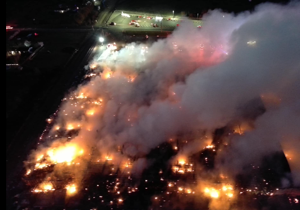
TRI-CITIES, Wash. – Kennewick wasn’t the only city that Black people in the community faced segregation and discrimination in the early 1940s through the 1960s.
During that period the only place Black people were allowed to live was east Pasco, according to several community members who experienced that segregation.
“I remember that was pre-civil civil rights days where like other speakers had said, that if you didn’t live in east Pasco, it was very difficult to live somewhere else,” said Dallas Barnes.
Barnes started living in the Tri-Cities in 1952 at 12 years old, at a time when he said the railroad track in Pasco acted as a dividing line.
Aubrey Johnson, a business owner in the Tri-cities who moved to Pasco in 1946, gave one experience in west Pasco as a kid when a police officer asked for the exact address he was going to when Johnson was on the way to his friend’s house.
“Well, you know, as a kid, I wasn’t looking at the address to see what it was, you know, and I say well they lived over on 14th – and that’s the best that I can tell you,” Johnson said. “(The officer) says, well, I tell you what, don’t let me catch you back over here anymore. And it sort of just kind of like threw me for a loop because we thought we had advanced beyond that.”
Johnson said his mom taught him not to act that way and it was difficult not to reciprocate.
“It kind of defined a prejudice within me towards a prejudice that was given,” Johnson said.
According to WSU Tri-cities history professor Robert Bauman, the Tri-Cities had a history of only allowing people of color to live in east Pasco starting with early Chinese railroad workers in the late 19th century.
He said as Hanford started to grow an organization was contracted to hire workers for the site. It sought employees from the South where wages were lower, especially for Black people according to Bauman.
He also said Kennewick, Richland and Pasco all had restrictive real estate covenants, or agreements that made it difficult for Black people to live anywhere but east Pasco.
The type of segregation people faced during that time was something Bauman said many were used to in the South, but did not necessarily expect in Washington.
“Most people I interviewed were somewhat surprised, but the wages were so good here, so much better,” he said when talking about what made people want to stay.
Barnes said being in one area of Pasco and facing similar struggles made the Black community closer.
“It was crystal clear who we were, what we were about. And we were quite, quite proud of it,” he said.



